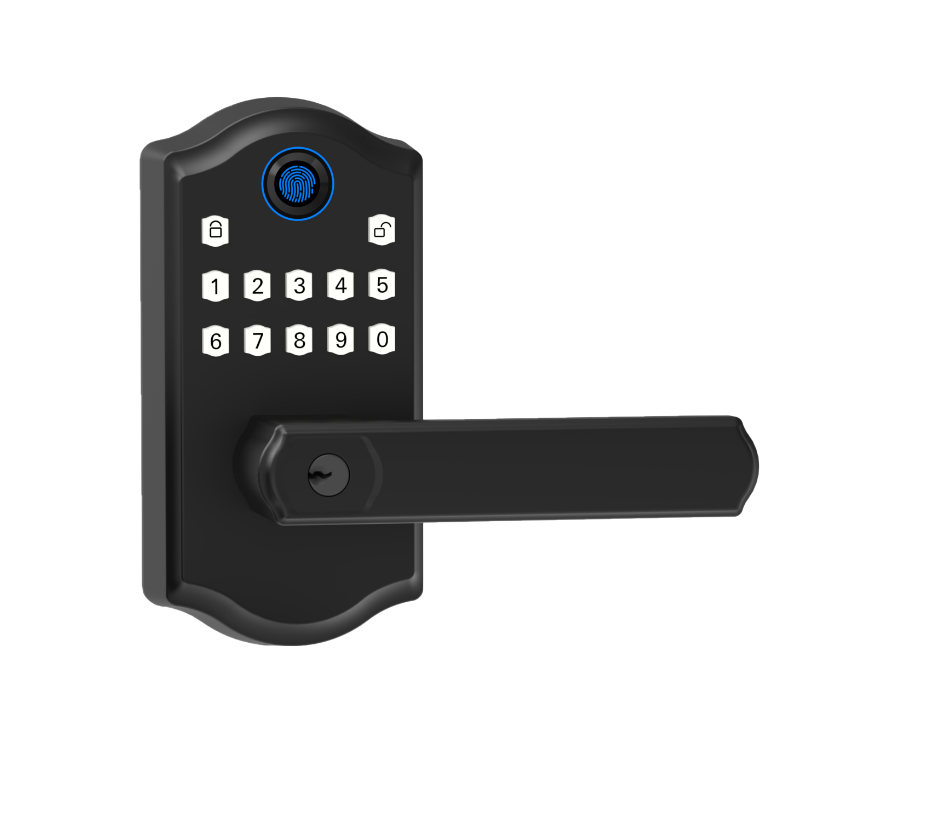You might think a smart lock is just a flashy keyless latch. But WiFi, Bluetooth, and Zigbee each speak their own digital language.
WiFi (your home network connection) reaches about 150 feet. Its smooth metal faceplate glows with a soft LED light when it’s online.
Bluetooth (a close-range link) feels as slick as swiping a credit card right next to the lock. Zigbee (a low-power mesh network) passes signals from one device to the next like runners handing off a baton.
Ready to dive in? Here’s an easy guide to help you pick the right fit for your home or office.
Comparing WiFi, Bluetooth, and Zigbee Smart Lock Protocols

Ever wondered how smart locks talk? Let’s dive into three common ways: WiFi, Bluetooth Low Energy (BLE), and Zigbee mesh.
WiFi smart locks plug right into your home network using IP-based (Internet Protocol-based) communication on the 2.4 gigahertz band. You’ll get about 150 feet of indoor range, enough to unlock from your backyard patio. The lock’s smooth metal faceplate lights up with a soft LED glow when it’s online. No hub needed. And because it’s cloud-enabled, you can lock or unlock from anywhere.
Bluetooth smart locks lean on BLE (a low-power radio link) to pair your phone within 30 to 50 feet. It feels as quick as swiping a credit card. Batteries can last up to a year, so you’re not swapping cells every month. Best part? You don’t need internet or extra hardware for local unlocks.
Zigbee smart locks run on a low-power mesh network. Each device hands off the signal, like runners in a relay, to stretch coverage. You will need a hub to bridge that mesh back to your WiFi. But once it’s set up, the network is rock-solid.
Choosing the right protocol means finding the sweet spot between power use, coverage, complexity, and budget. WiFi suits homeowners who crave wide reach and remote access. Bluetooth locks cost less and sip battery power, ideal for rentals or small offices. Commercial buildings often lean on Zigbee’s mesh resilience. Hotels sometimes mix WiFi on main doors with Bluetooth in guest rooms.
Here’s a quick look at what matters:
• Range: WiFi ~150 ft, Bluetooth 30–50 ft, Zigbee mesh varies
• Battery life: WiFi locks last months, Bluetooth up to a year, Zigbee months
• Cost: Bluetooth locks tend to be the most budget-friendly
• Security: All offer strong encryption; WiFi and Zigbee can support enterprise-grade protocols
• Hub requirement: Only Zigbee needs one
• Best use case: Homeowners, rentals, commercial sites, hospitality
Over 10,000 locks installed worldwide.
What you’ll learn: Range, Battery Life, Cost, Security, Hub Requirements, Best Use Case.
Comparing WiFi, Bluetooth, and Zigbee

WiFi connects your lock to your home’s dual-band network (connects at 2.4 GHz and 5 GHz) like a wide highway through your house. It can reach about 150 feet indoors if your router’s signal makes it that far. You get instant remote access via a smartphone app (the app on your phone) so you can lock or unlock from anywhere. The data speed rivals a wired system, and the connection stays strong as long as your router’s signal hits your door.
Battery & Power
WiFi drains more juice than Bluetooth or Zigbee. You’ll probably swap batteries every three to six months, depending on how often people come and go. Or you can hook the lock up to wired power for a steady feed. No more mid-day low-battery warnings.
Cost & Setup
Expect to spend about $150 to $300 for a WiFi smart lock, including hardware, app support, and firmware updates. No extra hub needed. Installation is straightforward: swap out your old deadbolt, insert batteries or wire in power, then open the app and pair over WiFi, think of it like linking your headphones to your phone. You’ll hear a reassuring click when it locks in place.
Security & Requirements
WiFi locks lean on your home network’s encryption (WPA2 or WPA3) for safety. An open or out-of-date router can leave you exposed. Make sure you get a solid 2.4 GHz signal right at the door and set a strong router password. That way your lock stays reliable and secure.
Bluetooth Smart Locks: Range, Battery Life, and Security
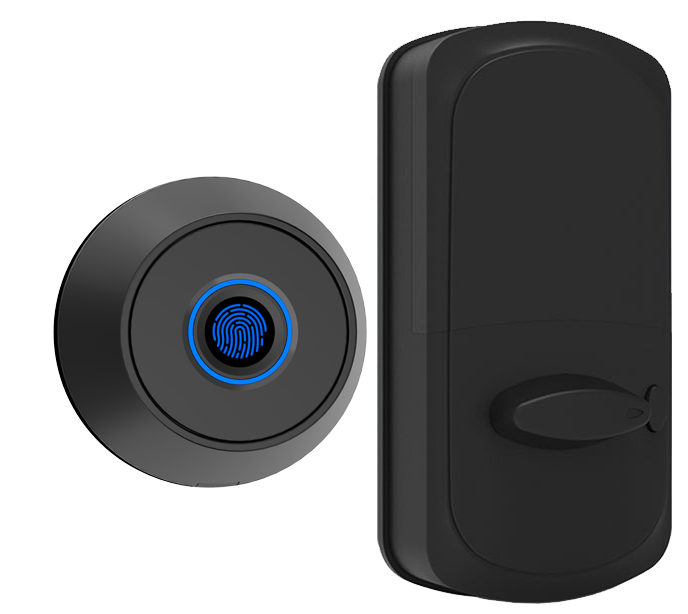
Bluetooth smart locks use Bluetooth Low Energy (BLE) to pair with your phone from about 30 to 50 feet. It’s like having a silent guardian that clicks open as you walk up. No more fumbling for keys.
They sip power so well they’ll run 6 to 12 months on one set of batteries (AA batteries). That soft LED glow is your cue: time to swap batteries. Easy.
Most models cost between $100 and $200. You skip the extra hub and save cash. Win-win.
These locks use AES-128 encryption (a method to scramble data) to keep your keyless entry safe. Secure. Control stays local, no internet required. Want remote access? Just add a bridge device.
Zigbee Smart Locks: Mesh Networking and Energy Efficiency
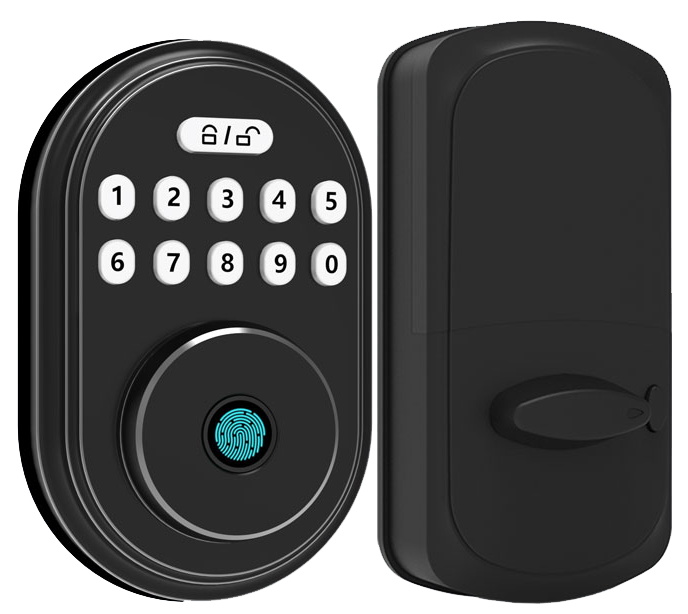
Zigbee smart locks form a low-power mesh network (where each lock passes signals along). It’s like a chain of whispering neighbors, giving you wide coverage without draining batteries.
To tie it all together, you add a Zigbee hub or gateway (the device that links your locks, lights, and sensors). Once it’s set up, your lock can trigger a hallway light or a motion sensor, everything speaks the same language.
These battery-powered locks use regular AA batteries and last over one year (no mid-season swap).
Over a year of battery life.
Pricing runs about $120–$250 per lock, plus $50–$150 for a hub. A modest investment for a rock-solid smart entry system.
Every message zips through AES-128 encryption (a strong code that keeps eavesdroppers out). Each lock checks its neighbor directly, no middleman weak spots.
As you add more locks, the mesh grows with you, signal strength stays solid, even across large homes or yards. Ideal for anyone already rocking a Zigbee setup.
Comparing WiFi, Bluetooth, and Zigbee Smart Lock Protocols
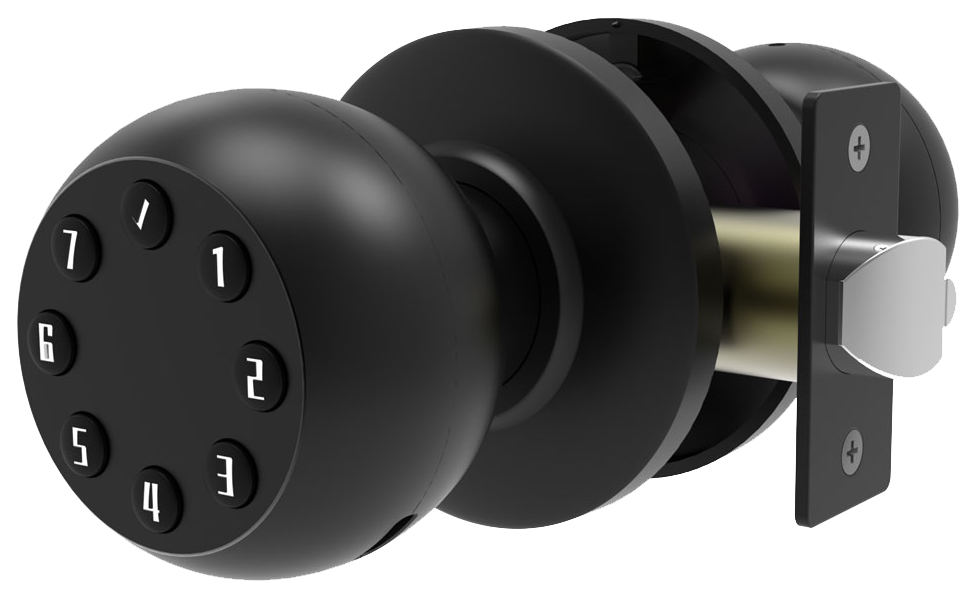
Let’s see how three popular protocols stack up for your smart lock. We’re talking WiFi (wireless over your router), Bluetooth (short-range pairing with your phone), and Zigbee (low-power mesh network). We’ll compare range, battery life, and cost. Solid.
| Feature | WiFi (wireless over your router) | Bluetooth (short-range phone pairing) | Zigbee (low-power mesh network) |
|---|---|---|---|
| Range | Up to 150 ft (about half a football field) | 30–50 ft (direct pairing to your phone) | 30–65 ft per device (mesh hops extend coverage) |
| Battery Life | 3–6 months | 6–12 months | 12+ months |
| Cost | $150–$300 | $100–$200 | $120–$250 + $50–$150 hub |
WiFi gives you the farthest reach but drains batteries faster. Bluetooth saves power but keeps you close. Zigbee stretches battery life and uses mesh links for more range. Back to our locks.
Installing and Integrating Starlight Smart Locks: WiFi, Bluetooth, and Zigbee
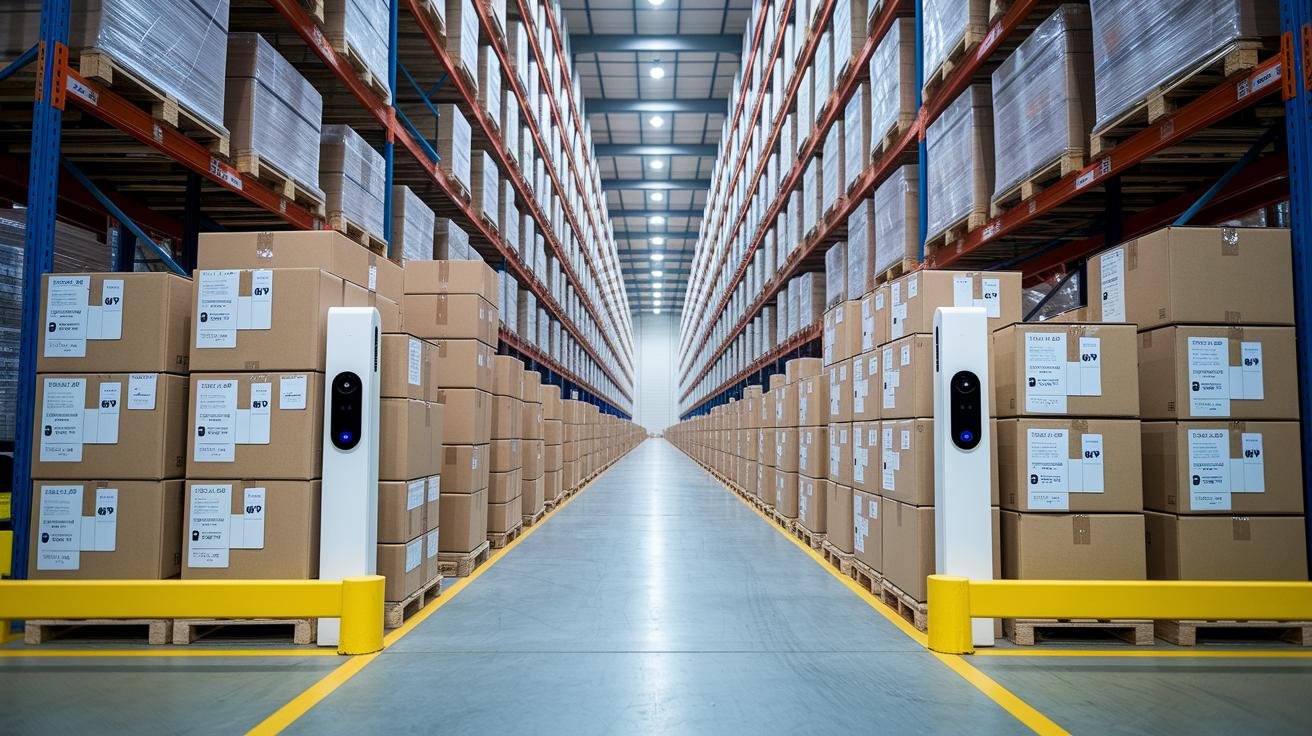
First, measure your door’s backset (the distance from the edge to the center of the hole) and its thickness. This makes sure your new lock fits like a glove. Remove your old deadbolt by unscrewing the interior thumbturn and pulling both sides apart. If the new faceplate isn’t lining up, slip in a deadbolt adapter (a small spacer that lines the bolt up with the strike). You can also swap a round latch for a deadbolt cutout with our latch conversion kit.
Next, let’s tackle the WiFi and Bluetooth models. Position the smooth metal mounting plate on your door, snap the lock body in place, you’ll hear a reassuring click, and pop in fresh AA batteries. Download the Starlight Home app and follow the setup steps. Think of pairing like linking your headphones: choose BLE (Bluetooth Low Energy) or WiFi mode, enter your network info, then watch for the soft LED glow to turn solid. Solid glow. That means your lock is online and ready for local or remote access.
For Zigbee locks, you start with those same hardware steps. Then pair each lock with your Zigbee hub (the device that ties all your gadgets into one mesh network). Open the app’s hub settings, tap “Add Device,” and let the lock handshake with the network. As you add more locks, the mesh grows stronger. You’ll get better coverage and seamless integration across doors, gates, even garage entries.
Over 10,000 locks installed worldwide.
Considering a DIY setup? Most homeowners breeze through with our illustrated guide. But um, if you have nonstandard doors or you want guaranteed perfect alignment, a professional installer can save you time.
Don’t forget our universal accessories. Our smart lock manufacturer China reputation for OEM and bulk orders means you can grab deadbolt adapters, latch conversion kits, and full ecosystem support whenever you need it.
We built this kit so you can focus on what matters – security.
Selecting the Right Starlight Smart Lock Technology for Your Home
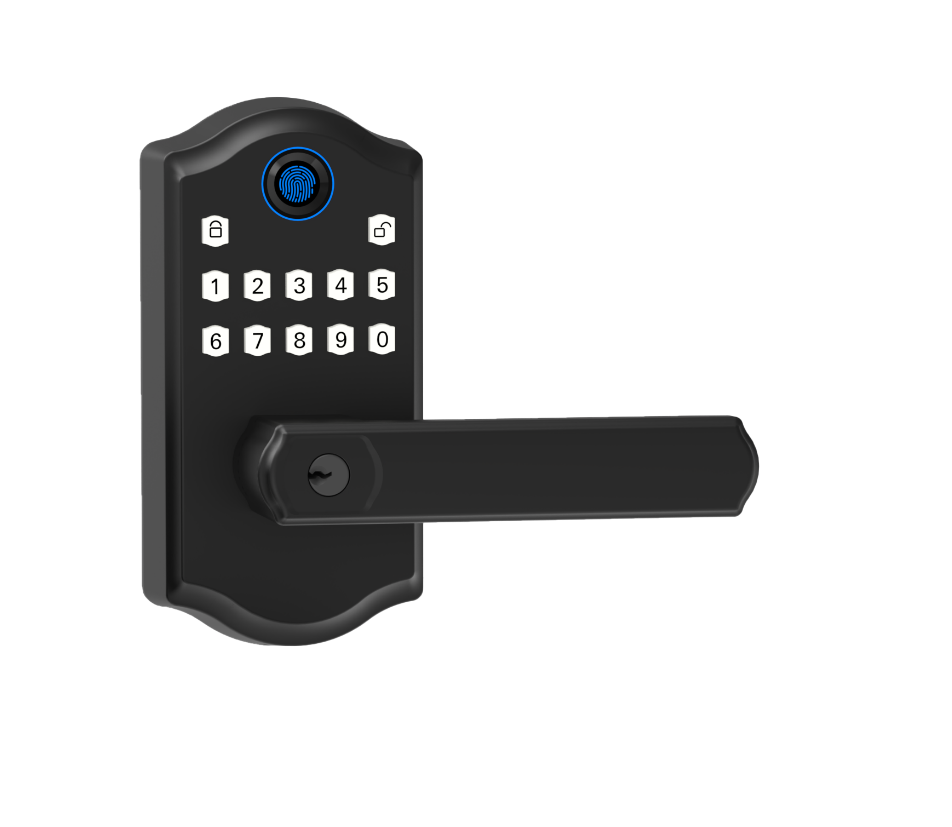
Pick between WiFi (wireless internet reach), Bluetooth (battery-friendly short-range), or Zigbee (mesh network robustness). Each has its own perks. WiFi lets you lock up from anywhere. Bluetooth keeps the battery going for months.
But here’s the thing. Starlight Smart Locks don’t stop at connectivity. They come with voice-control integrations for Alexa, Google Home, and basic HomeKit (Apple’s smart home system). Just say “Lock up!” and watch the smooth metal faceplate light up, followed by a reassuring click. No fumbling around.
Got family, roommates, or a dog walker? Create permanent codes for people who come every day, and one-time passes for guests or cleaners. It’s like having a virtual doorman. Safe. Convenient.
Ever dash out without your keys? Our geofencing automation senses you leaving and quietly locks the door behind you. When you step back onto your porch, a soft LED glow welcomes you home. It’s a little moment of peace.
We’ve spent 20 years honing these locks in China, and every model carries CE certification (proving it meets strict European safety standards). Whether you need one lock or a hundred, our global supply chain and OEM support have you covered. Solid. Reliable. Ready.
Final Words
in the action, we defined how WiFi, Bluetooth, and Zigbee smart locks connect and serve different needs.
We dug into range, battery life, cost, security, hub needs, and best use cases.
Then we guided you through installing each Starlight model and choosing the right tech for your space.
Armed with these insights on The Difference Between WiFi, Bluetooth, and Zigbee Smart Locks, you’re ready to streamline access and boost security.
Enjoy seamless guest check-in, peace of mind, and a brighter access-control future!
FAQ
What’s the difference between Wi-Fi, Bluetooth, and Zigbee smart locks?
The difference between Wi-Fi, Bluetooth, and Zigbee smart locks lies in connectivity: Wi-Fi gives direct cloud access, Bluetooth offers short-range low-energy links, and Zigbee uses a mesh network through a hub.
How do Zigbee and Bluetooth ranges compare?
The ranges of Zigbee and Bluetooth differ: a single Zigbee node reaches around 33–66 feet but extends via mesh, while Bluetooth Low Energy usually covers 30–50 feet in direct line of sight.
How do Zigbee and Bluetooth power consumption compare?
Power consumption between Zigbee and Bluetooth varies: Zigbee’s mesh uses ultra-low energy lasting over a year, while Bluetooth Low Energy also draws little power for roughly 6–12 months per battery set.
Is Zigbee or Wi-Fi better for home automation?
Zigbee or Wi-Fi is better based on needs: Zigbee excels in low-power mesh setups and large device networks, while Wi-Fi shines when you want direct cloud control and wide router-based range.
What is a Bluetooth smart lock?
A Bluetooth smart lock is a door lock that connects via Bluetooth Low Energy to your phone for local, keyless entry, using encrypted signals (AES-128) and offering offline access within 30–50 feet.
How can I choose the best Bluetooth door lock?
Choosing the best Bluetooth door lock means looking for AES-128 encryption (secure), 6–12 month battery life, solid build quality, and a user-friendly app that lets you share temporary codes.
Which protocol is best for smart locks: Wi-Fi, Bluetooth, or Zigbee?
Wi-Fi suits remote control and notifications, Bluetooth fits simple local unlocking with long battery life, and Zigbee works best in mesh-based home setups with many devices.
Which is more secure, Zigbee or Wi-Fi?
Zigbee and Wi-Fi both use AES encryption, but Zigbee’s mesh and dedicated hub reduce outside access points, while Wi-Fi security depends on your router’s WPA2 or WPA3 setup.

